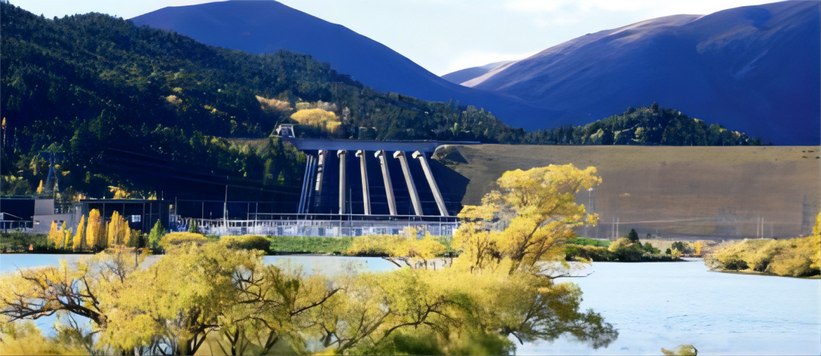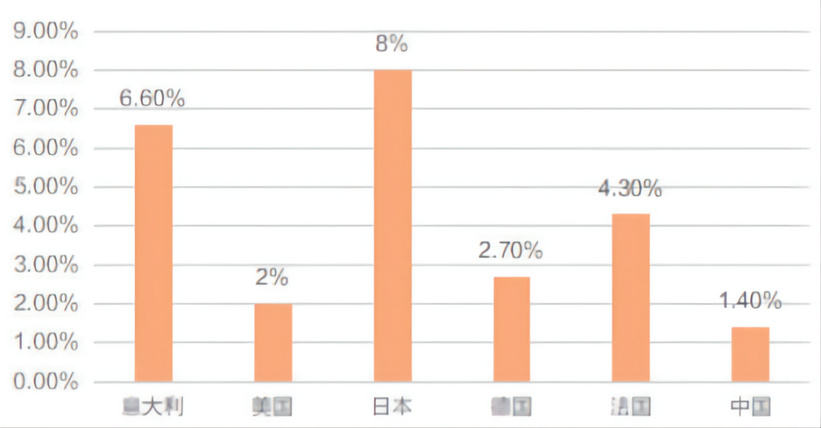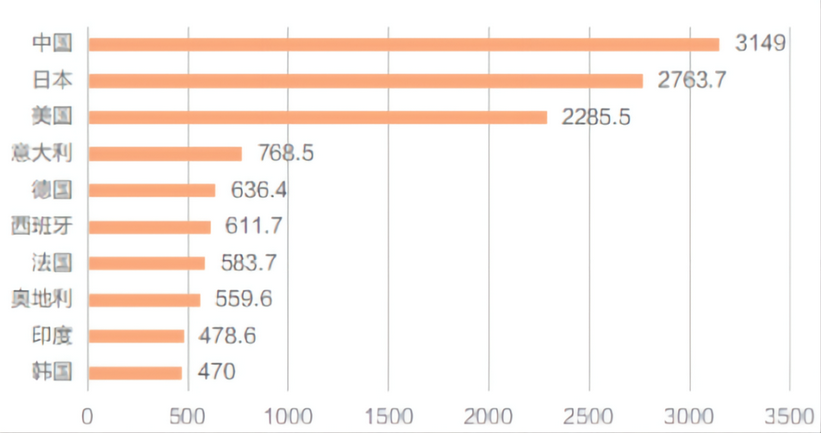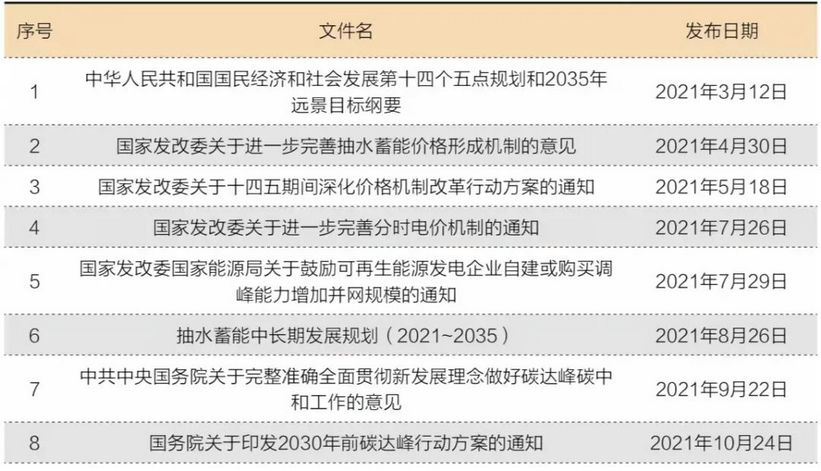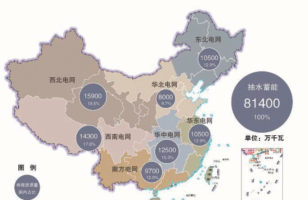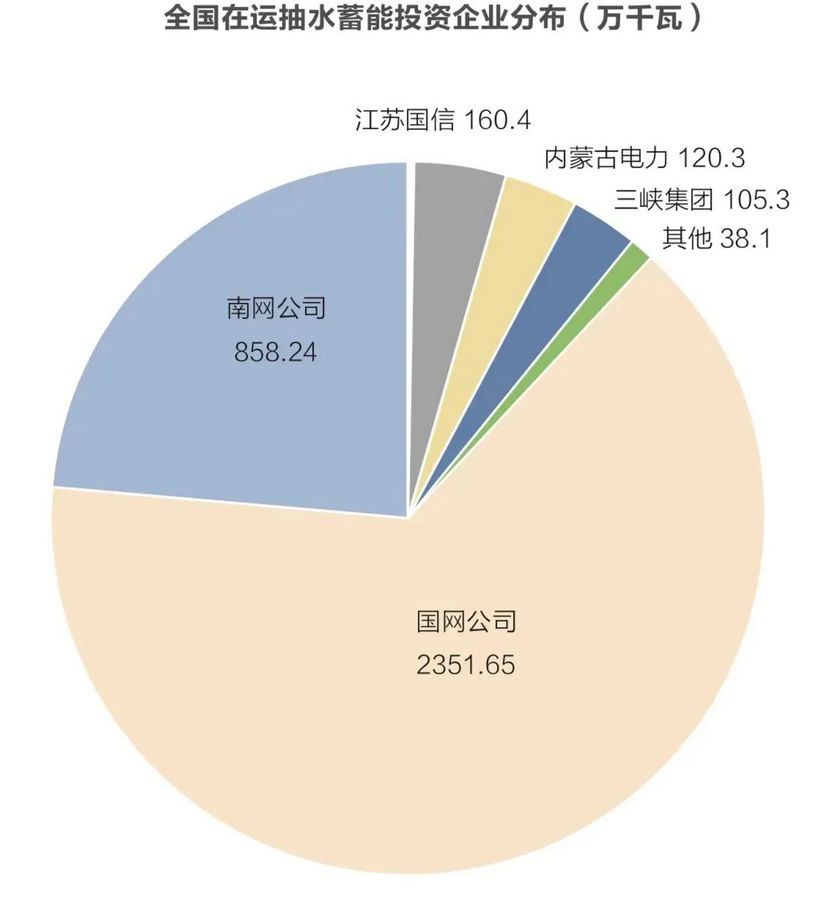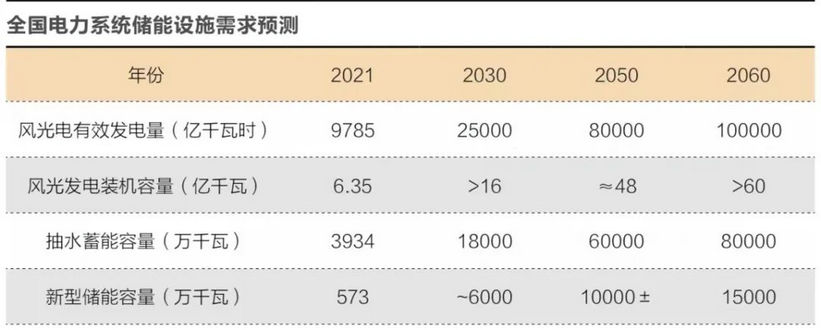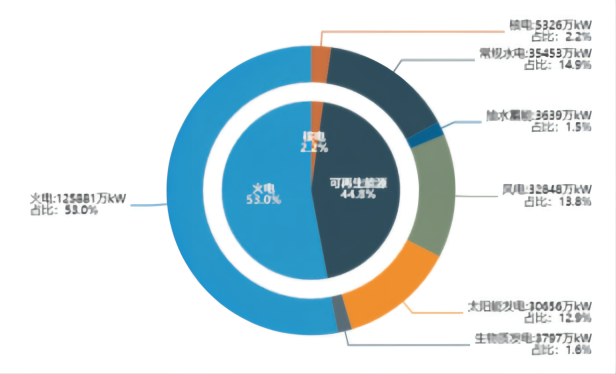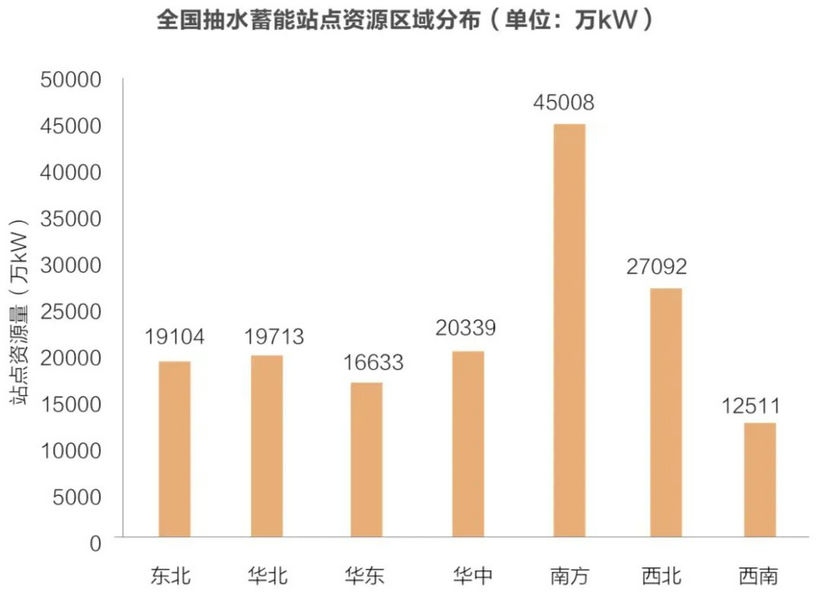| Cold and heat of pumped storage |
| Release time:2023-02-15 09:40:47| Viewed: |
Driven by the "double carbon" strategy, stable economic growth, construction of new power system and other factors, the domestic pumped storage industry is ushering in a new round of construction peak.
Recently, Ding Yanzhang, Chairman of China Electric Power Construction Group Co., Ltd. (hereinafter referred to as "CEC"), introduced in a signed article in the People's Daily that in order to accelerate the expansion of the scale of the pumped storage industry and accelerate the development and construction of projects, China will focus on the implementation of "double 200 projects" during the "14th Five-Year Plan", that is, more than 200 pumped storage projects will be constructed in 200 cities and counties, with a target of 270 million kilowatts.
The construction scale of 270 million kilowatts far exceeded the previous plan. In the "Fourteenth Five-Year Plan" for Modern Energy System, the National Development and Reform Commission and the Energy Administration proposed to accelerate the construction of pumped-storage power stations, implement a new round of national medium-term and long-term development plan for pumped-storage power stations, and promote the construction of large-scale pumped-storage power stations that have been included in the plan and have mature conditions; Strive to reach more than 62 million kilowatts of installed capacity of pumped storage and about 60 million kilowatts of installed capacity under construction by 2025. The Medium-term and Long-term Development Plan for Pumped Storage (2021-2035) proposes that the target of pumped storage production is 120 million kilowatts by 2030.
As one of the most important pumped storage construction enterprises, the statement of the Chairman of China Power Construction Corporation kindled the enthusiasm of the pumped storage industry. Pumped storage technology, which started in the 1950s, is the most mature energy storage technology with the best economic benefits, the strongest flexibility, the highest security and the most widely used. By the end of 2020, the installed capacity of pumped-storage energy accounted for 94% of the total capacity of global energy storage. China has built a pumped storage power station with a total installed capacity of 36.39 million kilowatts in 2021, the highest in the world. However, the proportion of pumped storage in China's power system is only 1.4%, far lower than that of developed countries in Europe and the United States.
Proportion of pumped storage in power system at the end of 2020
Installed capacity of pumped storage in major countries in the world by the end of 2020 (10000 kW)
In the past several power construction tides, pumped storage power stations are not outstanding. At present, why has pumped storage become a hot investment? From the cold to the hot, how has pumped storage experienced?
Optimal flexibility regulation power supply
2021 can definitely be called the "first year" of pumped storage. "All nuclear power can be used and all nuclear power can be opened" - this is the attitude of the National Development and Reform Commission and the National Energy Administration to the pumped storage projects during the "14th Five-Year Plan" period.
From the 14th Five-Year Plan for the National Economic and Social Development of the People's Republic of China and the Outline of the 2035 Vision on March 12, 2021, pumped-storage energy has appeared in eight national documents within one year.
The construction of the new power system has created an opportunity for the development of the pumped storage industry. On March 15, 2021, the ninth meeting of the Central Committee of Finance and Economics made further arrangements for carbon peak and carbon neutral, and proposed to build a new power system with new energy as the main body.
New energy power generation depends on the weather and has problems such as randomness, intermittence and volatility under the influence of weather and climate, which has a great impact on the safe and stable operation of the power grid. Therefore, there must be enough flexible power supply in the power system. Flexible regulated power sources include thermal power units, hydropower units, pumped storage units and new energy storage facilities. In the power grid between source and load, only by relying on energy storage and regulating power supply can the source follow the load and balance the source and load be realized.
Among all flexible regulated power sources, thermal power belongs to fossil energy, and its development is limited in the era of carbon neutrality. Coal-fired power has poor regulating ability and slow starting speed; Domestic gas power generation is limited by natural gas prices and resources, and it is difficult to achieve large-scale development.
Conventional hydropower is also an excellent regulating power source. Zhang Boting, a consultant expert of China Hydroelectric Engineering Society, told the reporter of Energy magazine: "However, the construction of the leading reservoir in our country is relatively backward, and conventional hydropower cannot play the best regulatory role, and it has fluctuations due to the seasonal impact. At present, domestic hydropower construction can only be said to be on schedule, and is difficult to develop rapidly due to environmental protection and other problems. Moreover, the construction cycle of conventional hydropower is too long, far from being able to hydrolyze the thirst."
The new energy storage technology represented by electrochemical energy storage is also the focus of the industry. Compressed air energy storage, flywheel energy storage, lithium electronic battery energy storage, supercapacitor energy storage and other technologies have their own advantages and characteristics, but these technologies have made different progress. Hydrogen energy storage and superconducting energy storage are still in the research and development stage, lead-acid battery and liquid-flow battery are still in the demonstration application stage, and compressed air energy storage and lithium-ion battery energy storage technology and economy are poor.
"In general, pumped storage has a series of advantages such as fast regulation, low cost, large scale, mature technology and high security. When the power system needs to regulate the power supply, pumped storage is the best choice." A professional from China Energy Construction Corporation (hereinafter referred to as "China Energy Construction") introduced.
The advantages of pumped-storage energy itself make it stand out in the construction of new power systems. At the same time, the continuously improved electricity price mechanism also provides a strong driving force for the development of pumped storage power stations.
Zhou Jianping, chief engineer of China Power Construction, told the reporter of Energy magazine, "Sorting out the power system reform and electricity price reform and other programs in recent years, the introduction of each policy has left a broad market space for the development of pumped storage. It can be said that the policy mechanism has promoted the rapid development of pumped storage."
Is the 6.5% return on assets sufficient?
"In fact, in the 1990s, we put forward the planning goal of building 100 million kilowatts of pumped storage by 2020," said Zhang Boting. But the reality is that we have not achieved the target of 30 million kilowatts installed in the 12th Five-Year Plan or the target of 40 million kilowatts installed in the 13th Five-Year Plan.
Resources of pumped storage stations included in the planning in China
The question is, don't we need pumped storage after entering the 21st century? The answer is no. At the beginning of the 21st century, due to the rapid growth of power load, power shortage often occurred throughout the country, and peak shaving demand was strong. However, the construction speed of pumped storage is far from that of conventional thermal power. Thermal power has entered a period of rapid development, but pumped storage can only fall behind once.
The core issue is the electricity price mechanism.
Before the power system reform in 2002, the power generation, transmission and distribution were all coordinated by the former State Power Corporation. Large-scale construction of pumped-storage power stations is conducive to the safe and stable operation of the power system, with good economy and low cost. At that time, the State Power Corporation had the power to plan and build pumped storage.
However, after the separation of power plant and power grid in 2002, the power grid undertook the work of power system stability. If large-scale construction of pumped-storage energy is needed, power grid companies need to increase investment, but the income is not high. Based on this, power grid companies are more inclined to let power generation units undertake peak shaving, frequency modulation and other auxiliary services. For pumped storage with low yield, it naturally fades out of the investment planning vision.
"The country did not want to improve the economy of pumped storage energy to stimulate investment," said the above insiders, "but the Notice on Issues Related to Improving the Price Formation Mechanism of Pumped Storage Power Plants issued in 2014 has not been fully implemented. The so-called expectation of introducing social capital investment has not been realized."
Among a series of policy documents in 2021, the most important is the Opinions on Further Improving the Price Formation Mechanism of Pumped Storage Energy (FGJG [2021] No. 633) issued by the National Development and Reform Commission on May 7, 2012. This document adheres to and optimizes the two-part system of electricity price, improves the price supervision system of pumped storage energy, and gradually straightens out the way to guide the price of pumped storage energy. The new mechanism is connected with the construction and development of the power market. The capacity electricity price is uniformly approved and included in the transmission and distribution electricity price. In the future, the coverage ratio of the capacity electricity price approved by the government will be reduced in due time.
The new mechanism clarifies the pricing method for the electricity price of pumped storage capacity, and checks the price according to the income of 6.5% of the internal rate of return of capital fund, so as to give investors a "reassurance" and achieve stable revenue. Under such stimulation, various enterprises began to actively layout the pumped storage industry.
A person from a new energy enterprise told the reporter of Energy magazine that the company is currently investigating the location planning of some pumped storage power stations and studying the possibility of building pumped storage power stations to coordinate the development of new energy.
In addition to new energy enterprises, traditional power generation enterprises, power EPC enterprises, local energy investment companies, etc. are actively involved. "At present, the internal rate of return on capital of wind power, photovoltaic and other new energy projects is 6%~7%, and 6.5% is attractive enough for enterprises." The head of an energy investment company said, "We should know that the financing cost of many new energy projects of central enterprises is about 3%~4%."
The problem is that compared with the new energy project "full power grid acquisition", pumped storage has no such guarantee. In the two-part electricity price of pumped storage, in addition to "the operation period of power station capacity electricity price is 40 years, and the internal rate of return on capital is 6.5% during the operation period", there is also a market-oriented electricity price. According to the FGJG [2021] No. 633 document, in places where the spot electricity market has not yet operated, the comprehensive efficiency of pumping and power generation of pumped storage power stations is considered as 75%, the pumping electricity price is implemented as 75% of the benchmark price of coal-fired power generation, and the on-grid electricity price of power generation is implemented as the benchmark price of coal-fired power generation.
"The problem is whether the power generation income of the pumping and storage project can be guaranteed." The head of the above-mentioned energy investment enterprise said, "If it is a pumped storage power station operated by a power grid enterprise, the power grid will give priority to dispatching, and if it can generate electricity, it will generate electricity. However, if it is a pumped storage power station operated by a non-power grid investment, the uncertainty of whether it can generate electricity will increase."
According to Energy magazine, before the change of the price mechanism of pumped storage energy in 2021, there had been a case of long-term loss of a pumped storage power station owned by a state-owned power company and finally transferred to the grid for operation. Although the unit electricity price has increased, the profitability of pumped storage is still in doubt if the dispatching mode cannot be changed.
The pumping and storage are not overheated
Like all the industries that have been booming, pumped storage is also facing the same question: "Is the development of pumped storage overheated?"
Peng Cheng, director of the expert committee of the General Institute of Hydropower and Water Resources Planning and Design, said: "There is no wrong direction for the development of pumped storage. Don't worry about overheating." Because to achieve carbon neutrality, thermal power must gradually withdraw. After the withdrawal of thermal power, hydropower, pumped storage and new energy storage are the ballast stones of the power system.
According to the Medium and Long-term Development Plan for Pumped Storage Energy (2021-2035) issued in August 2021 (hereinafter referred to as the Plan), the total production scale of pumped storage energy will be more than 62 million kilowatts by 2025 and about 120 million kilowatts by 2030.
2030 is the time when China plans to achieve the carbon peak. At this time point, is it enough to have 120 million kilowatts of pumped-storage power generation installed?
According to the plan, non-fossil energy consumption will account for more than 25% in 2030, and the installed capacity of wind and electricity will reach more than 1.2 billion kilowatts. "Based on the analysis and prediction of various domestic authoritative institutions, we predict that the national power generation will exceed 12.3 trillion kilowatt-hours and 16.5 trillion kilowatt-hours in 2035 and 2050, of which the new energy power generation will reach 5 trillion kilowatt-hours and 8.5 trillion kilowatt-hours in 2035 and 2050 respectively, accounting for 40% and 50%, and the corresponding installed capacity of new energy power generation will reach 3 billion kilowatt-hours and 5 billion kilowatt-hours respectively," Zhou Jianping said, "It is preliminarily estimated that the national energy storage scale will exceed 240 million kilowatts in 2030, of which the pumped storage scale will exceed 180 million kilowatts."
"In fact, the medium - and long-term plan for pumped storage put forward in the draft for comment that the target of 300 million kilowatts of installed capacity will be achieved by 2035." Zhang Boting said, "But when it was written, this article was removed. The main reason was that the industrial chain capacity could not keep up with it."
Although we have solved the problem of localization of main equipment, the long-term downturn of pumped storage has also limited the expansion of capacity scale. According to Energy magazine, Harbin Electric and Dongfang Electric are the main producers of pumped storage units in China. The current capacity limit of the two companies is about 40 units/year, that is, about 10 million kilowatts a year. It is undoubtedly difficult to achieve 120 million kilowatts of installed capacity in 2030 at this speed.
"At the end of the 14th Five-Year Plan, we plan to achieve the annual production capacity of 45 sets of 300000 kilowatt-grade units by means of capacity expansion, transformation and processing," said Wang Quanlong, assistant general manager of Harbin Electric Machinery Co., Ltd. Assuming that the capacity of domestic equipment manufacturers is basically balanced, it is expected that the problem of equipment capacity will be gradually improved by the end of the "14th Five-Year Plan" and the beginning of the "15th Five-Year Plan".
Of course, capacity limitation does not refer to equipment alone. The preliminary feasibility study, project design and engineering construction all belong to the capacity category. "The construction period of new energy power generation projects is generally 1 to 2 years. The construction period of pumped storage projects is usually 6 to 7 years, and the preliminary survey, design and approval generally takes 3 to 4 years." Zhou Jianping said, "According to the current cycle, the construction of pumped storage cannot meet the development needs of the power system. Through standardization, modularization, digitalization and systematization, the period from the early stage to the production of pumped storage projects can be shortened by 2 or 3 years."
At present, the upstream and downstream of the pumped storage industry are actively participating in this development boom. Equipment manufacturers actively expand production capacity; EPC enterprises use new technologies to transform and upgrade, and shorten the cycle; The owner actively encloses land and seizes high-quality resources; The local government is even more enthusiastic, looking forward to the early implementation of billions or even tens of billions of projects.
Side B of pumped storage heat wave
Under the tide of the development of the pumped storage industry, local governments are enthusiastic. Because most of the pumped storage projects are built in mountainous areas, and most of the districts and counties where they are located are economically underdeveloped, billions or even tens of billions of pumped storage projects are of great significance to the promotion of local economic construction.
However, this round of pumped storage planning is more about site resource planning than systematic planning. "At present, in order to avoid the ecological red line in many regions, the project sites with stronger necessity and better resources have not been included in the medium and long-term planning," said the head of the design institute related to pumped storage.
The layout planning of pumped storage is a comprehensive issue, and the project layout must be integrated with the development of new energy, power grid planning, and regional load characteristics. "The development and planning of the project is based on the premise of ecological protection, giving priority to the sites with strong necessity and better resources." The above experts said, "Many high-quality project sites have not entered the medium and long-term planning, and some projects with lower priority have entered the planning. This may lead to poor project economy and even waste of resources."
The hasty planning and layout may have a series of serious consequences: (1) the demand demonstration is not sufficient and the layout is not reasonable, which may lead to unnecessary or unusable power station construction; (2) The construction conditions of some power stations are poor and the economy is poor, which will increase the power consumption burden of users after completion; (3) Inadequate demonstration in the early stage, resulting in uncompleted project and waste of investment; (4) The construction cost and operation cost of the power station may be difficult to digest for a while, which will drive up the debt ratio and power consumption cost of investment enterprises.
China is a vast country with different levels of regional economic development. From the perspective of resource efficiency maximization, it is the most efficient and economical way to realize large-scale cross-regional resource allocation. However, China's provincial administrative management, resource planning and power dispatching have obvious characteristics, which are likely to cause duplication and waste in the construction of pumping and storage power stations within the region.
The head of a domestic pumped-storage operation enterprise said: "At present, the investors attach great importance to the resource location, the phenomenon of horse racing is obvious, and the local government is also actively attracting investment. However, the consumption of pumped-storage power stations cannot be ignored."
Facing this situation, the owners of non-grid enterprises choose to cooperate with the grid. "By allowing the grid to participate in the project, at least some advantages can be obtained in power dispatching."
At present, the pumped-storage power stations that have been put into operation are basically located at the load side of the middle and east, close to the load center of the user end, and mainly solve the problems of real-time balance of power grid load and emergency standby. In the future, the Sanbei region, which is rich in new energy, is bound to urgently need to build pumped-storage power stations to realize the mutual benefit of "water and scenery savings". However, no matter the electricity price mechanism, resource planning, power market, dispatching rules, etc., are still lack of corresponding preparation.
In addition, pumped-storage power stations should avoid the detour of conventional hydropower stations. Zhang Boting said, "In recent years, we have lagged behind in the construction of conventional hydropower and the leading reservoir, which has led to the loss of a lot of regulation capacity of the power system. The leading reservoir can calm the contradiction between the high and low water output of hydropower, and improve the quality of hydropower power. Especially in the flood season, it can effectively relieve the pressure of waste water."
Unfortunately, the development cost of Longtou Reservoir is high and the rate of return is low. In the case that there is only one investment and development subject in a river basin, income compensation can also be increased through downstream power stations. If there are multiple development entities in a basin, it is difficult to recover the development of the leading reservoir. In addition to a series of obstacles such as immigration, environmental protection and ecology, the development of the leading reservoir has gradually evolved into the current state. |



